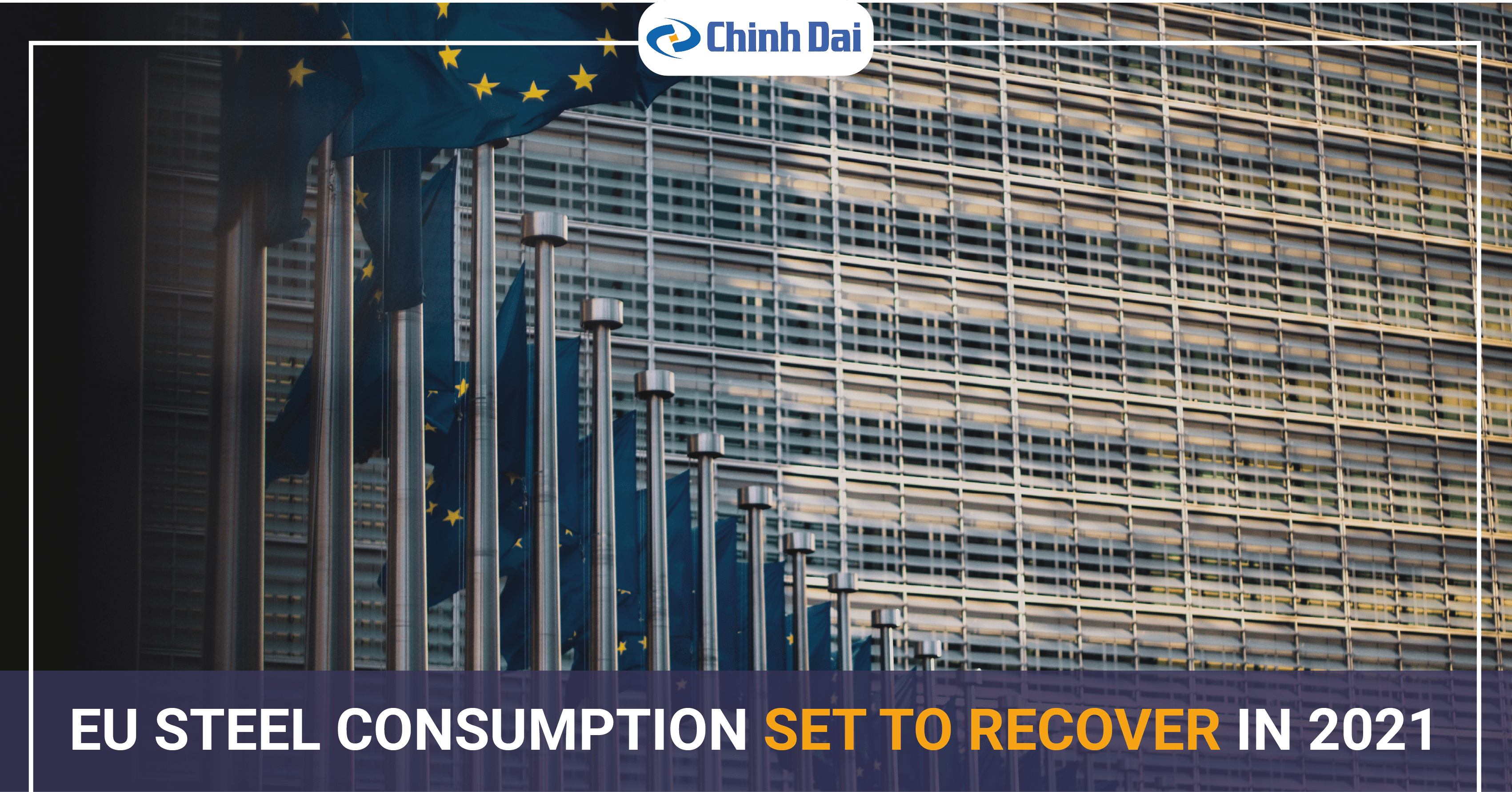
According to the European steel association Eurofer, the demand for steel in the European Union is expected to rebound by 13.3% year on year after a slump at 13% in 2020.
1. The downtrend of steel consumption in 2020
Through most of 2020, steel demand in the region had been on a negative trend. It is largely due to the pressures resulting from Covid-19 pandemic-related restrictions across Europe. Overall, steel demand in the EU has dropped by 13% year on year in 2020, to about 136 million tonnes. 2020 is also the worst year for the EU in terms of steel consumption since 2012.
2. Steel market is expected to recover in 2020 with the uptrend of steel consumption
Eurofer expects the steel market recovery that began toward the end of the 2020 third quarter to continue through 2021. In 2021, apparent steel demand in the EU is expected to rebound by 13.3% from 2020 levels (to reach 154 million tonnes, same as 2019) and then continue to grow, by another 3.4% through 2022.
According to a trader, the first quarter of 2021 has started on a positive note such as prices recovering and capacities [being] brought back. “It will be a resurrection year because 2020 was a nightmare and probably one of the worst in history”.
Besides, a strong performance in the key steel-using sectors (construction, automotive…) during 2021 will play a key role in the uptrend of steel consumption.
3. Key steel-using sectors that will have a strong impact on steel consumption
3.1. Construction sector
After a slump of 5.7% for 2020 as a whole, Eurofer expects construction output to recover by 4.3% in 2021. The construction industry is believed to be more resilient than other steel-using sectors when it comes to the impact of the pandemic. According to Eurofer, the construction sector cycle usually reacts more slowly to economic shocks.
Also, thanks to a mild winter on the continent, demand from the construction sector has continued to be good in the early weeks of 2021.
The weekly price assessment in the upstream market for steel reinforcing bar (rebar), domestic, delivered Northern Europe averaged €653.75 ($792.65) per tonne in January 2021. It is up from €573 in December and also the highest monthly average since September 2008.
Although spot steel prices for rebar in the north of Europe have declined slightly in early February, market sources said they did not see it as a trend reversal because prices are still at historical peaks.
3.2. Automotive sector
In 2020, the automotive industry was the worst hit of the steel-using sectors. The spread of the Covid-19 pandemic across Europe in March led to the suspension of most European car-making plants in the second quarter of the year.
Despite the gradual rebound inactivity after the lockdown measures were eased in the third quarter of 2020, the production activity in the automotive sector has fallen by 19.5% in 2020. However, Eurofer still anticipates a rebound in automotive output in the EU. According to Eurofer, production will rise 15.9% overall year on year, followed by more moderate growth (up 4.8%) in 2022.
Flat steel prices in the EU have been on a steadily upward track since August 2020, thanks to the tight supplies amid slashed output and reduced imports. That uptrend has continued so far in the first quarter of 2021. Even though market sentiment has cooled a bit recently, flat steel prices in the long term are still expected to be supported by good order booked at producers and solid demand.
Source: Fastmarkets
